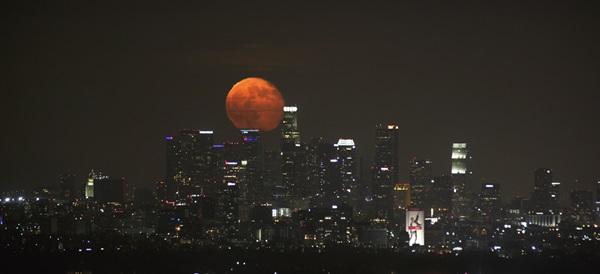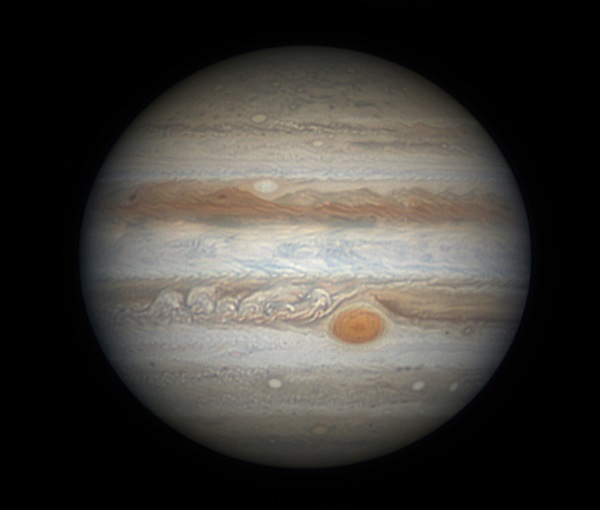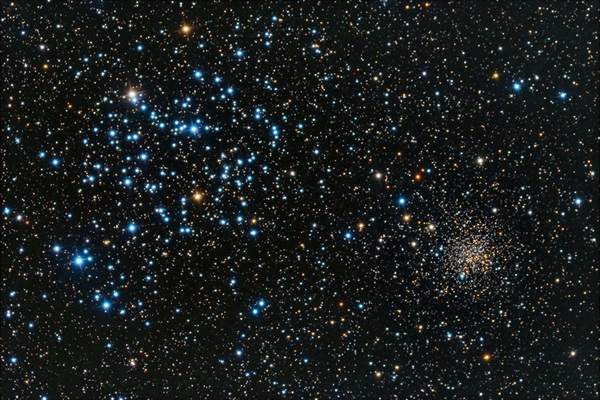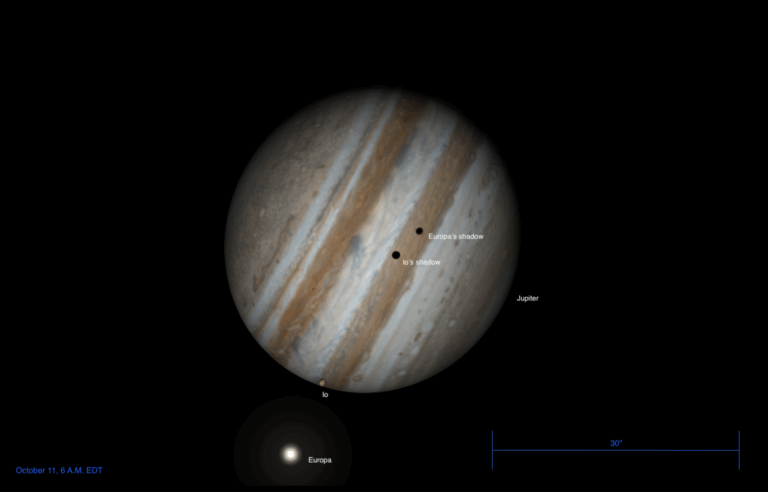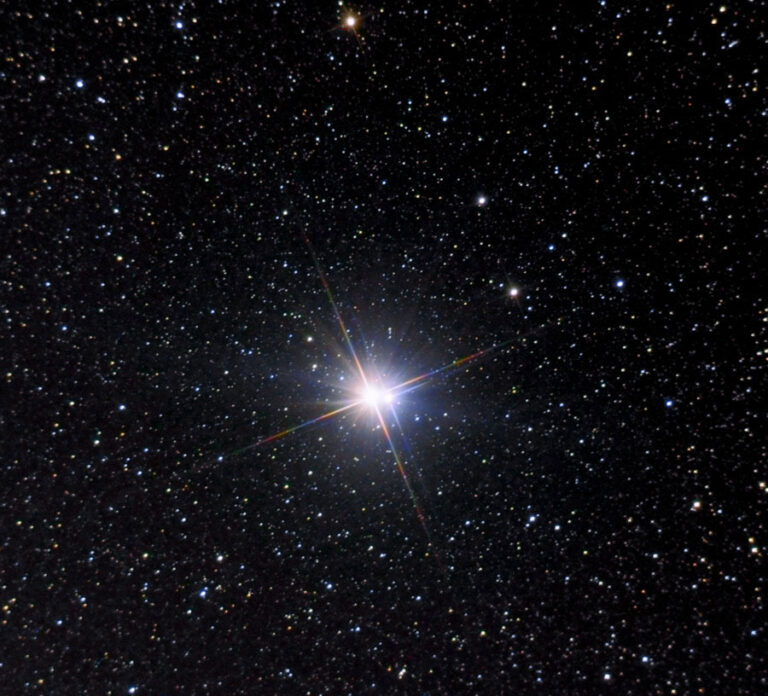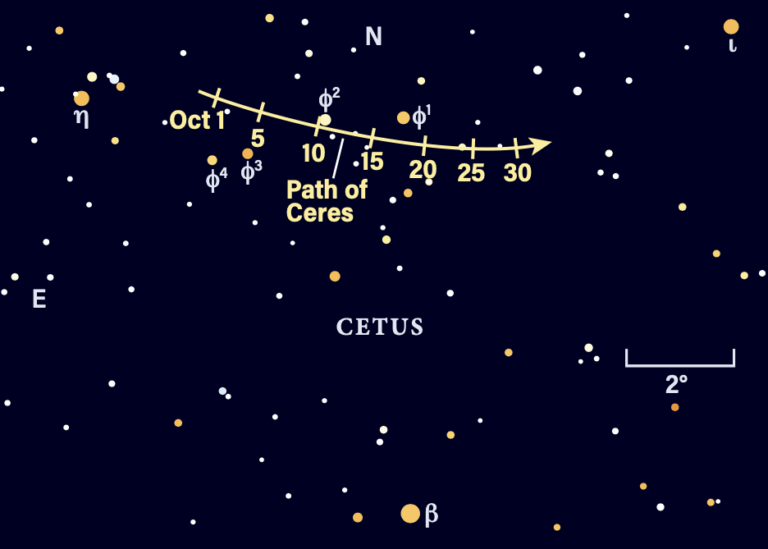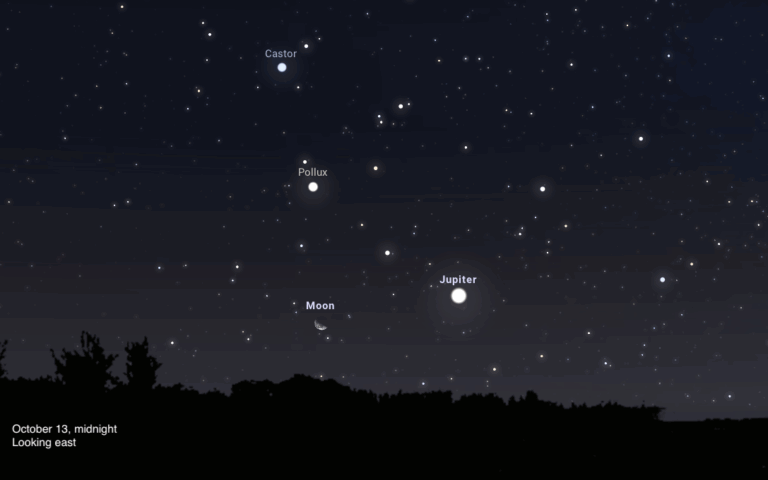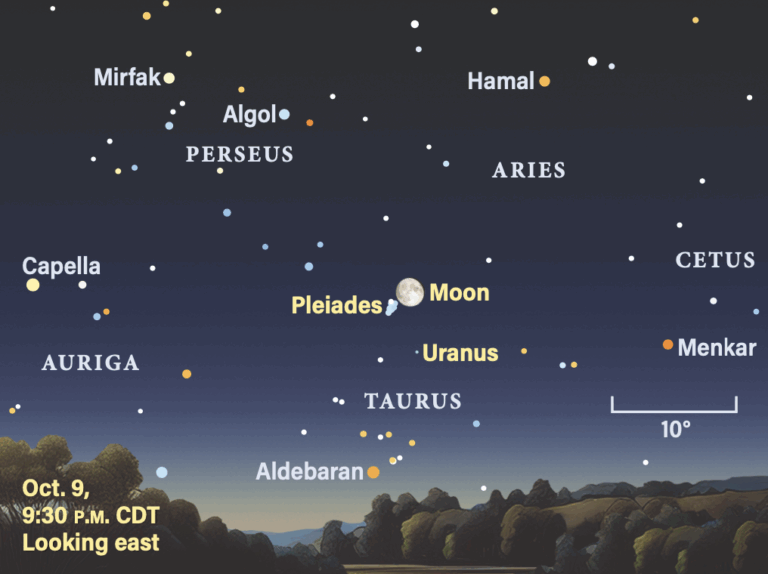Key Takeaways:
The Moon appears as a fat crescent this evening as it plunges through the Beehive star cluster (M44) in Cancer the Crab. Observers in the eastern half of North America have the chance to see dozens of stars disappear behind the Moon’s advancing dark limb, with most of the action occurring between 10 and 11 p.m. EDT. A telescope allows viewers to watch individual occultations while binoculars nicely capture the overall scene.
Saturday, May 11
First Quarter Moon arrives at 9:12 p.m. EDT. The half-lit orb rises around noon local daylight time, appears high in the southwest as darkness falls, and sets around 2 a.m. tomorrow morning. The Moon spends the night among the background stars of western Leo the Lion.
Sunday, May 12
Although the Eta Aquariid meteor shower reached its peak last week (on May 6), several stragglers should be visible during the predawn hours for the next couple of nights. Watch in the hour or two after the Moon sets and before twilight starts to paint the sky. An observer at a dark site can expect to see up to 10 meteors per hour, with those living close to the equator and in the Southern Hemisphere having the best views. Eta Aquariid meteors derive from debris ejected by Comet 1P/Halley during its many trips around the Sun. When Earth crosses this debris stream, our planet’s atmosphere incinerates the tiny dust particles and we see the streaks of light called meteors, or “shooting stars.”
Monday, May 13
Venus pokes above the eastern horizon about an hour before the Sun rises. The brilliant planet dominates the predawn sky as the rosy glow heralding the Sun’s arrival grows brighter. Venus shines at magnitude –3.8, more than three times brighter than the second-brightest planet, Jupiter. When viewed through a telescope, the inner world shows a disk that spans 11″ and appears 90 percent lit.
The Moon reaches perigee, the closest point in its orbit around Earth, at 5:53 p.m. EDT. It then lies 229,291 miles (369,009 kilometers) away from us.
Head outside late this evening and you can’t miss Jupiter. The giant planet rises before 10:30 p.m. local daylight time and climbs highest in the south around 3 a.m. Jupiter shines at magnitude –2.5, which makes it the brightest point of light in the sky until Venus rises in morning twilight. The planet currently resides among the much dimmer background stars of the constellation Ophiuchus the Serpent-bearer. A telescope reveals dramatic detail on the gas giant’s 45″-diameter disk as well as the four bright Galilean moons.
Wednesday, May 15
Saturn grows more conspicuous in the morning sky with each passing week. The ringed planet now rises before 12:30 a.m. local daylight time and climbs 25° above the southern horizon as twilight begins. Saturn shines at magnitude 0.4 and appears significantly brighter than any of the background stars in its host constellation, Sagittarius the Archer. A telescope shows the gas giant’s 18″-diameter disk and a spectacular ring system that spans 40″ and tilts 24° to our line of sight.
Thursday, May 16
Ruddy Mars slides across the border from Taurus the Bull into Gemini the Twins today. Shining at magnitude 1.7, the Red Planet appears slightly fainter than these constellations’ brightest stars, Aldebaran in Taurus and Castor and Pollux in Gemini. The planet lies nearly 20° high in the west-northwest an hour after sundown and doesn’t set until nearly 11 p.m. local daylight time.
Friday, May 17
Grab your binoculars tonight and target the bright star Regulus in the constellation Leo the Lion. Many people know that this object represents the Lion’s heart, but few realize it also is a binocular double. Regulus B, which glows at 8th magnitude, shows up as a pinpoint nearly 3′ from the 1st-magnitude primary. The pair stand about halfway to the zenith above the southwestern horizon after darkness falls.
Saturday, May 18
Full Moon occurs at 5:11 p.m. EDT, and our satellite looks completely illuminated all night. You can find it low in the southeast as darkness falls and peaking in the south around 1 a.m. local daylight time. The Moon begins the evening among the background stars of eastern Libra the Scales, but it crosses into northern Scorpius the Scorpion shortly before midnight across eastern North America and a bit after midnight from the continent’s western half.
There is a bonus object in Venus’ vicinity this morning. Look for 6th-magnitude Uranus 1.2° due north (to the upper left) of Venus. It should show up through 7×50 binoculars shortly after the pair rises if you have a clear sky and an unobstructed eastern horizon.
Mars continues to trek eastward against the backdrop of western Gemini, and this evening it skims less than 0.5° north of the 5th-magnitude star cluster M35. (Mars appeared slightly farther from this fine open cluster yesterday evening.) Binoculars or a telescope at low power will provide the best view of this pretty conjunction, especially once the sky grows dark around 10 p.m. local daylight time. The brightness disparity between the two objects is impressive: The Red Planet shines at magnitude 1.7, nearly 25 times brighter than the combined glow from all the cluster’s distant suns. If you turn a telescope on Mars, you’ll see a featureless disk that spans only 4″.

